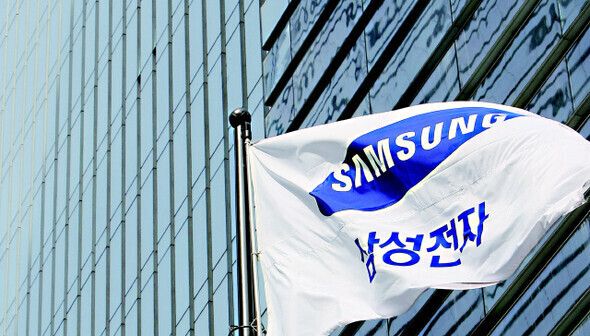Samsung Electronics will be investing US$17 billion into the new foundry, which is set to open in 2024

Samsung Electronics’ corporate offices in Seoul’s Seocho District. (Hankyoreh archive photo)
Posted on : Nov.25,2021
Samsung Electronics has selected Taylor, Texas, as the site of its new semiconductor fabrication plant. Samsung will be pouring US$17 billion into the factory to help strengthen its foundry division, which has long been regarded as a weak point at the company.
Four reasons for choosing Taylor
Samsung announced the decision in a press conference at the Texas governor’s mansion on Tuesday that was attended by Gov. Greg Abbott, US Senator John Cornyn, and Samsung Electronics Vice Chairman and CEO Kim Ki-nam. Work will begin on the new factory in the first half of next year with the goal of beginning operations in the second half of 2024. The factory will be used to manufacture system semiconductors in 5G, high-performance computing and artificial intelligence (AI).
Along with Taylor, the city of Austin was Samsung’s other major contender for the factory site. The main reason the company mentioned for choosing Taylor was synergy with other facilities. The lot in Taylor, which covers close to 2 square miles, is about 15 miles away from another Samsung plant in Austin, Texas. In effect, the two factories will be linked by a drive of 20-30 minutes.
“The decision to invest in Taylor was based on multiple factors, including the local semiconductor ecosystem, infrastructure stability, local government support and community development opportunities,” the company said, adding that “the proximity to Samsung’s current manufacturing site in Austin [. . .] allows the two locations to share the necessary infrastructure and resources.”
Another major consideration for Samsung was the fact that several major buyers of system semiconductors, including Tesla, Dell and AT&T, are also based in Texas. Since system semiconductors tend to be produced in small-quantity batches, communication with clients is a big part of a company’s competitiveness. The proximity of Texas Tech University will also help the company recruit talented workers.
Samsung’s selection of the factory site was also influenced by the benefits offered by the city government. “Taylor had offered incentives that include the equivalent of property-tax breaks of up to 92.5% for the first 10 years,” The Wall Street Journal reported the day before.

Texas Gov. Greg Abbott (left) and Samsung Electronics Vice Chairman Kim Ki-nam (right) shake hands at a press conference held at the governor’s residence in Texas on Tuesday. (provided by Samsung Electronics)
In pursuit of TSMC
Samsung Electronics’ new factory will give it a leg up in the foundry market, where the company has been seen as underperforming. Once the third line is completed in Pyeongtaek in the second half of next year and the new factory in Taylor goes online in 2024, Samsung will have gained the production capacity to compete for supremacy with Taiwan Semiconductor Manufacturing Company Ltd. As of the second quarter, TSMC was the No. 1 firm in the industry, with a 52.9% market share, while Samsung Electronics was at 17.3%.
In effect, these calculations were what Lee Jae-yong had in mind when he promised to make Samsung the global leader in the foundry sector by 2030 while announcing the company’s “Semiconductor Vision 2030” in April 2019.
In a similar context, Samsung Electronics and TSMC are locked in a fierce battle for technological supremacy. Samsung announced in the Samsung Foundry Forum 2021 last month that it will be introducing a 3-nanometer production line based on gate-all-around (GAA) technology in the first half of next year. Industry analysts said that Samsung was seeking to emphasize that it has as much as a six-month technological advantage over TSMC, which plans to launch a 3-nanometer production line based on current FinFET technology in the second half of next year.
Meanwhile, TSMC is currently spending US$12 billion on a new factory in Arizona that’s supposed to open in 2024. The Taiwanese company also plans to set up a joint venture with Sony and invest US$7 billion on the construction of a production facility in Kumamoto Prefecture with enthusiastic support from the Japanese government.
By Sun Dam-eun, staff reporter
Please direct questions or comments to [english@hani.co.kr]
No comments:
Post a Comment